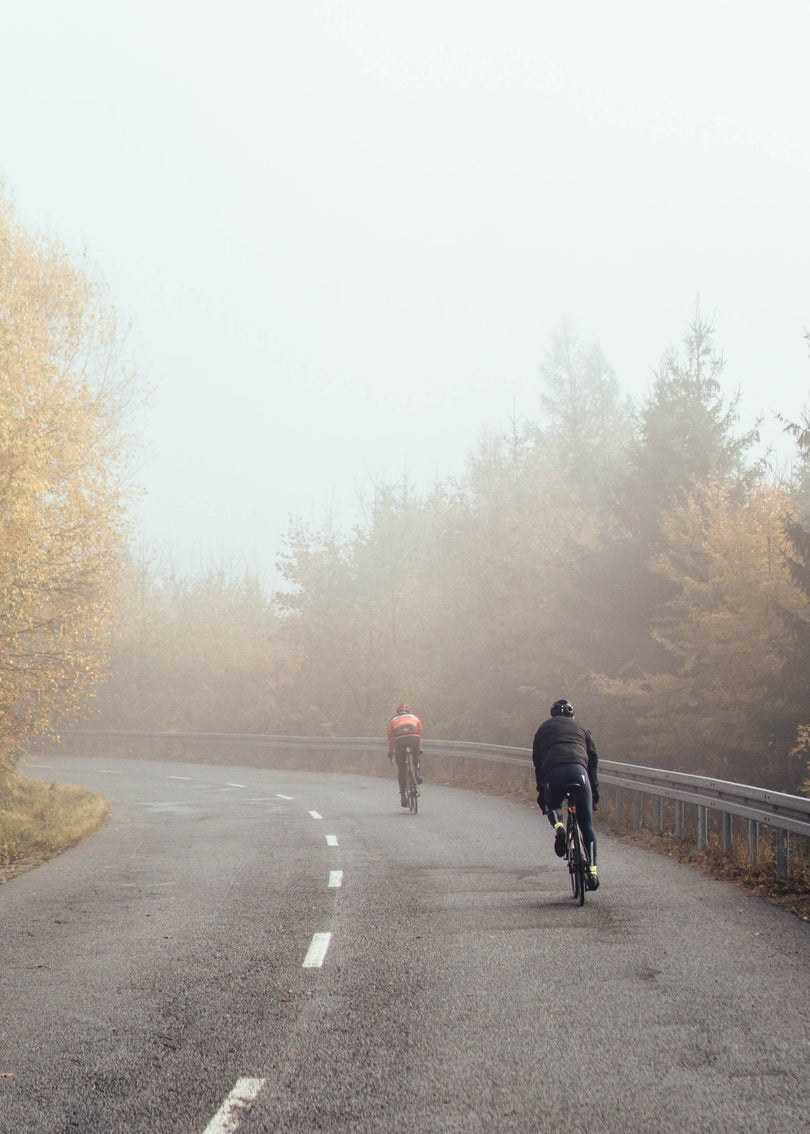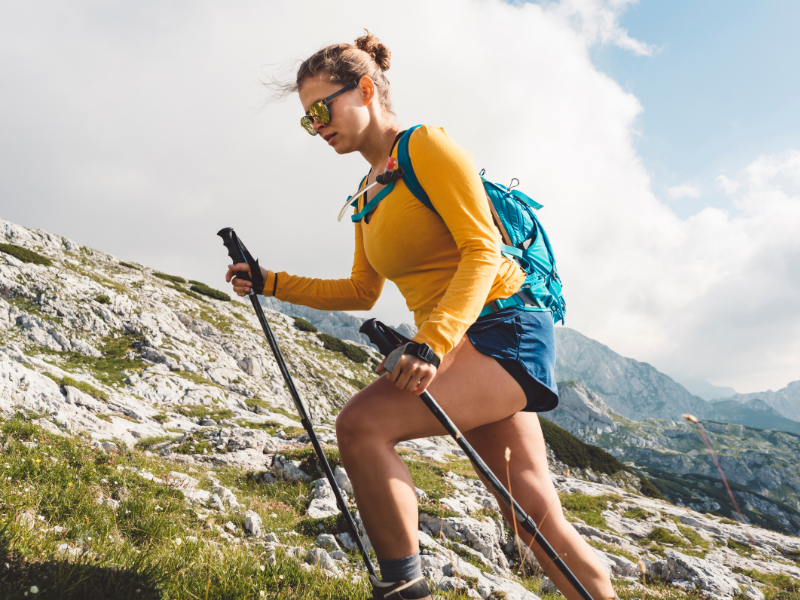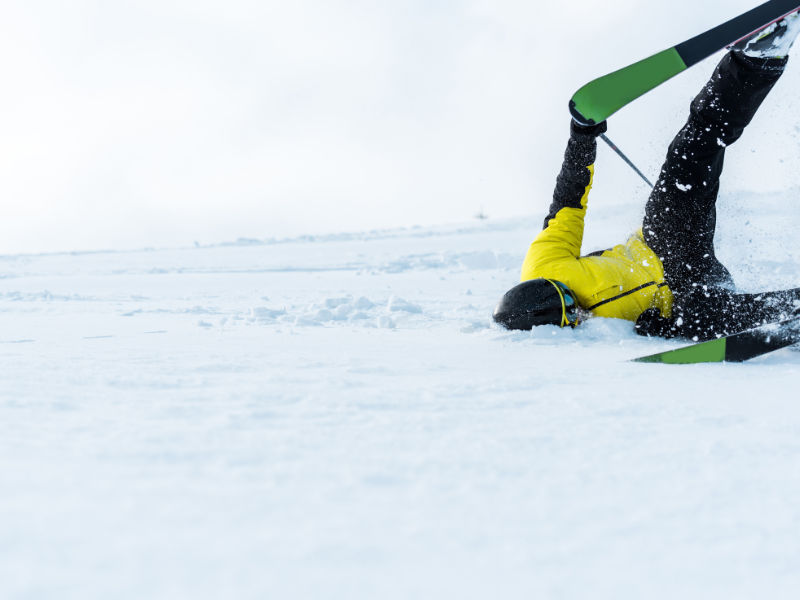When watching someone else do it, hiking seems easy. Then you try it yourself and realize how many muscles get worked and how much physical stamina it requires. You’re hiking in a group soon and don’t want to get prematurely winded, so how do you physically prepare for hiking?
Here are six trail-tested ways to get your body and mind into hiking shape:
- Walk or run in sand or gravel
- Do plenty of strength training
- Try weighted step-ups
- Build your cardiovascular health
- Focus on upper-body strength too
- Practice hiking
By following this exercise regimen at least eight weeks ahead of your next planned hiking trip, you can slowly yet surely get your body into prime hiking shape. Keep reading for more pointers on doing just that!
6 Tips to Prepare Your Body for Hiking
Not getting your body ready for the trail is like showing up without the right gear—it can make for a long, difficult day. Speaking of which, if this is your first time hiking, or it's been a minute, and you aren't sure what to bring, definitely check out the Kenver guide on packing for a hike
Prepping physically though, you don’t need to be able to run a marathon to go on a hike, but you should at least be able to walk briskly for several miles. The fitter you are, the more easily you’ll be able to manage inclines, declines, and variable terrain. So let's get to it.
1. Walk or Run in the Sand or Gravel
While walking or running are good exercises to do to increase your stamina and your cardiovascular health ahead of your hike, they are, in a way, too easy.
Not easy to do, of course, but easy on your muscles, especially if you run or walk all the time.
Hiking is not exactly like walking or running. You’re ascending, and so you need terrain that mimics what you’d experience when hiking before the real thing (as your body still isn’t ready).
Sand and pea gravel are the next best thing to a hiking trail. Find a beach, a smooth gravel trail, or a sandy dune near you (and ensure you have permission to tread), the hillier, the better. Then set out for a trek.
Walking or running in sand or gravel is like cranking up the resistance on an exercise bike.
Even though you might be attuned to the rigors of walking or running normally, you’ll immediately realize that it’s a lot harder to do the same on uneven terrains like sand or small gravel.
Start slow and keep building up your mileage. As you do, you’ll develop stronger ankle and knee muscles that will make hiking easier.
2. Do Lots of Strength Training
Hiking requires an optimal mix of strength and balance to safeguard yourself from injury - incorporating more strength training into your routine is a must.
A few times per week at least, do the following exercises:
- Overhead triceps extensions
- Biceps curls
- Walking lunges
- Squats
- Glute bridges
These exercises focus on building a stronger core primarily. Your core comprises all the muscles attached to your pelvis and spine, including the abdominals, obliques, lower back, and glutes.
Having a stronger core improves your balance and stability, which in turn reduces your risk of falling. That’s very important when hiking for more than lowering injury risks but for preserving your life.
The above exercises might be challenging to do at first, especially if you’ve never added them to your routine before now.
Eventually, your muscles will adjust to your exercise regimen. When that happens, to avoid plateauing, begin using resistance bands when doing leg-strengthening exercises especially such as lunges.
You’ll take your muscles further and work them harder, getting you ready for the hike ahead.
Incorporate free weights into your routine as well. You can start with a low weight such as five or 10 pounds apiece. As you increase your strength through training, you’ll feel comfortable lifting heavier weights.
3. Add Weighted Step-Ups to Your Routine
Hiking is not solely about traversing a path but carrying a backpack with you as well.
If you haven’t held a backpack since your school days, let alone used one for any prolonged period, you'll most likely find your first hiking excursions slow and painful.
You can prepare for carrying a backpack without having to hike if you do weighted step-ups.
Pack your bag for a day of hiking and then put the bag on a scale. That weight is your goal carrying weight, whether it’s 15, 20, or even 35 pounds.
To start, you want to load your bag with a five-pound weight. Put it on your shoulders, head to your local park or gym, and find a bench or a platform that’s at least 16 or 18 inches tall.
Do three sets of step-ups per leg, which is six per rep. Then switch to your other leg.
Repeat this at least twice per week.
Then, next week raise the stakes, maybe you make it 10 pounds in your backpack, then 15 pounds, and so on.
Ultimately, you want to reach the point where you’re doing step-ups three times per week at a rate of 700 steps (both legs) in under a half-hour when carrying the weight of your packed hiking backpack.
It might sound like a lot, but by slowly creeping up the weight, and staying consistent with your training, you’ll achieve it before you know it.
4. Improve Your Cardiovascular Health
That terrible feeling of being winded on a hiking trail means you’re not doing enough cardio.
Having more cardiovascular endurance will elevate your fitness and performance as a whole. You can also build your stamina depending on the exercises you do.
Here are some of the best cardiovascular exercises you can do before a hike:
- Walking (five days per week for at least 30 minutes, ideally briskly)
- Sports (especially tennis, cycling, and swimming)
- Running (you only need to run at a moderate pace to reap the benefits)
- Jumping rope (try to jump as many times as you can in 60 seconds, then pause and repeat)
- Kettlebells (aim for 30 seconds of activity, 30 seconds of rest, and then repeat)
- High-intensity interval training or HIIT
If you don’t have access to much outdoor greenery in your neck of the woods, you can always use gym equipment to boost your cardio instead.
Rowing machines, exercise bikes (aka stationary bikes), stair climbers, and elliptical machines are excellent alternatives to being able to run, walk, or cycle outdoors.
Cardio exercises also provide the benefit of torching calories, so you might find that you lose some weight as well.
5. Build Upper Body Strength
Although the exercises we’ve discussed have focused primarily on your core and your lower half, you can't ignore the upper half of your body as well when hiking. This is where most people get tripped up when they start training for a hike.
You’ll need upper body strength even though you’re using your lower half much more intensely when on a hike.
You might carry hiking poles in both hands, or perhaps you engage your arms by swinging them while you hike to increase the number of calories burnt.
Regardless, upper body strength–especially in the back, shoulders, and arms–will improve your hiking posture. This will reduce your injury risk.
Besides that, you’ll also find it easier to carry your fully-loaded backpack without pain, and you might experience fewer tension headaches as well - yes those are very real if you aren't fit for the hike.
Push-ups are always a great upper-body exercise to incorporate into your routine, since it works your abs, shoulders, chest, and arms.
Here are several more to consider, if push-ups aren't your thing, or you want to mix it up:
- Pull-ups (works the arms, shoulders, and upper back)
- Triceps dips (works the shoulders and arms)
- Dips (works the triceps and chest)
- Ab wheels (works the core)
- Oblique crunches (works the core)
6. Practice Hiking
The exercises suggested throughout this article won’t put you in hiking shape overnight. You have to commit to a regular exercise routine for several weeks.
But, you’ll begin noticing that your power, strength, and stamina all increase. These are surefire signs that you’re ready for a practice hike.
Your first practice hike should only be a short excursion for maybe an hour or two. Select a short, simple trail.
You may find that you struggle along the way, and that’s fine. Listen to your body and try to remember what you’re having a hard time with.
Then go home and work on improving your fitness, even more, be that through strength training, cardio, or resistance training.
The next time you go on a practice hike, you should find that fewer of the challenges that plagued you before are present.
As you continue to practice, increase the duration of your hikes and the difficulty of the trails.
If you can, practice hiking on the trail you plan on traversing with your group. This way, you’ll be ready for its dips, turns, and curves. You’ll also feel physically adept at finishing the trail.
Preparing Your Body for a Hike Requires Physical and Mental Commitment
Sure, preparing your body for hiking requires building your strength, stamina, and cardio endurance, but that’s only part of the equation.
You'll find at points in your training that urge to give up or take an "extended break."
Oftentimes, what limits us physically is our mental state. We think we can’t go any further or do one more push-up when in reality, we totally can. Barring injury, if you commit to the physical part, you'll build the mental part.
You may surprise yourself with how far you can push your body if you only commit to it mentally. So as you’re working on building your strength and preparing your body for a hike, don’t forget the mental side of things.
Just by committing to the 6 tips for training, you're already getting mentally hardened for the journey ahead.
And finally, give yourself ample time to improve - at least eight weeks ahead of your next planned hike. If you do, then it should only be a matter of time before hiking comes more naturally to you.







